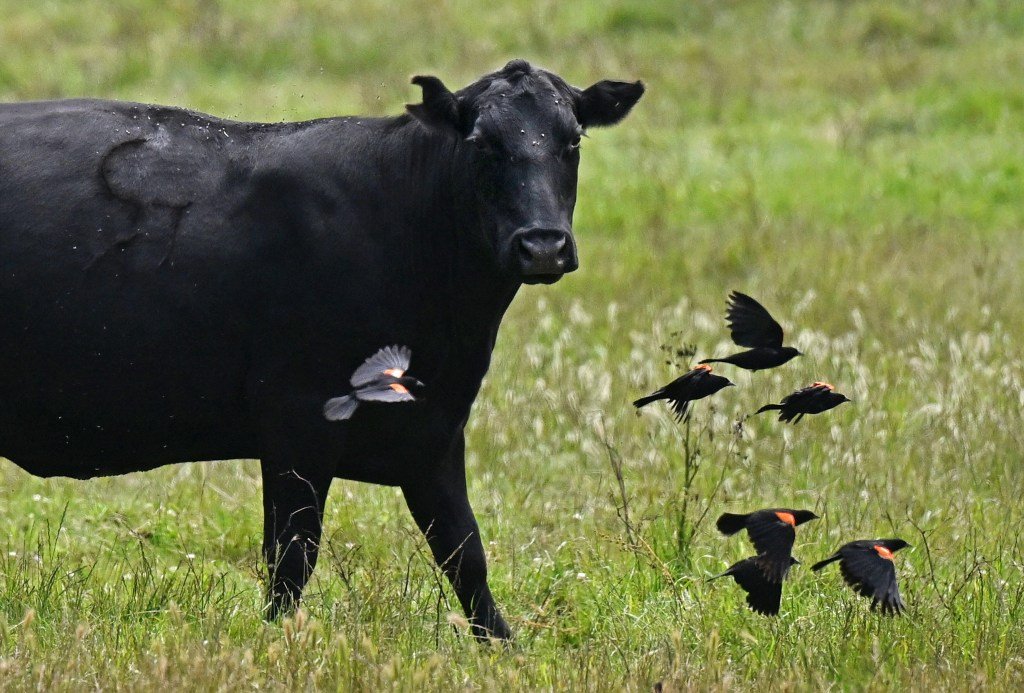
Marin County’s annual look at agricultural production took on a new dimension this year with the analysis of its total economic contributions to the county.
“We can go beyond simply documenting gross agricultural production value,” said Fernando De Paolis, a researcher with the consulting group Agricultural Impact Associates of Monterey County.
Marin County hired the firm to prepare the more comprehensive report on the economic contributions of local agriculture.
“When somebody drives around the county, especially the western side, they can’t help but notice that agriculture must be pretty important to the county economy,” De Paolis said.
“Well, it’s even more important than they realize,” he said. “Every dollar of agricultural output creates economic ripples throughout the Marin County economy.”

The crop and livestock report, which was also presented to county supervisors on July 8, showed that the total gross value of the county’s agricultural production for 2024 was $83.8 million, a decrease of about 2% from the 2023 value of $85.3 million.
The analysis determined that in 2023, the most recent year for which comprehensive economic data are available, agriculture contributed a total of $257.2 million to the county economy.
Of that amount, $191.3 million came from direct economic output via production and processing. An additional $65.9 million came from multiplier effects generated by purchase of agricultural supplies and spending by employees.
These multipliers include agricultural producers buying milking machines, feed, supplements, insurance, banking services, veterinary supplies and more. They also include consumption by the owners and employees of agricultural businesses when they pay for groceries, housing, health care, leisure activities and other household items.
In addition, the group found that agricultural production and processing directly supported 750 employees, plus another 331 employees from multiplier effects.
Jeff Langholz, another researcher with Agricultural Impact Associates, said Marin agriculture also delivers a host of other valuable “ecosystem services.” They include open space, wildlife habitat, carbon storage and many other benefits including protection from wildfires.
The firm estimates the monetary value of these benefits amounts to $464.8 million to more than $2 billion per year. Grasslands delivered nearly all of that value. The county’s 2023 agriculture report listed 154,000 acres of pasture.

“Marin County’s working lands provide open space and scenic beauty, which in turn provides all kinds of physical and psychological benefits for people living in such a beautiful place,” Langholtz said, “as well as economic benefits in terms of real estate values.”
Martin Pozzi, president of the Marin County Farm Bureau, said, “We always knew agriculture contributed much more to Marin than people realize. Now, thanks to this study, we have a fuller sense of agriculture’s contributions.”
However, the consultants’ report notes that Marin agriculture is facing mounting economic pressures.
“For example,” the report states, “many farmers are ‘land rich’ but financially poor. Also, a large percentage depend on off-farm income in order to survive.”
While the Agricultural Impact Associates report was being prepared, another dairy ceased operations, and by next spring 12 cattle operations, several of them dairies, will exit Point Reyes National Seashore as part of a legal settlement with several environmental organizations that sought their ouster.

The legal settlement, which Marin supervisors chose not to involve the county in, has raised questions as to whether local agricultural producers are nearing a breaking point.
Albert Straus, founder and executive chair of the Straus Family Creamery, has warned that the North Bay is approaching a tipping point at which the number of dairy and ranching operations in the area will fall below the number required to support the larger agricultural infrastructure that includes feed mills and veterinary services.
Both De Paolis and Langholz declined to address the issue.
“We’re not really too much into the business of prediction,” De Paolis said. “As you know, economists have predicted five of the last three recessions, so they always get it wrong.”
County Agriculture Commissioner Joe Deviney, however, said, “Unfortunately, we’re vulnerable.”
Vince Trotter, the University of California Cooperative Extension agricultural ombudsman for Marin, wrote in this year’s crop and livestock report that the best way for Marin residents to support local agriculture is to purchase their food directly from a producer or a farmers’ market.
“Every dollar goes into the pocket of the producer,” Trotter wrote.
Deviney said the 2% drop in the county’s overall agricultural production in 2024 occurred despite the fact that Marin was not experiencing drought conditions as in prior years. Marin’s agricultural production has declined steadily since the start of the COVID-19 pandemic in 2020, when the gross value was over $100 million.
Deviney said the lower numbers in 2024 also were unaffected by the Point Reyes National Seashore legal settlement, but effects are likely to be evident in next year’s report.
For the second year in a row, poultry, valued at $21.9 million, was Marin’s top grossing agricultural commodity, despite a 11% decrease in value from 2023. Organic milk ranked second in value, decreasing 1% to $21.6 million. Cattle and calves were third in value, totaling $16 million. The value of field crops rose 7%, and the value of wine grapes increased to $978,000. Aquaculture also continues to be a strong commodity for Marin. Its value increased to $6.4 million in 2024, up 5% over 2023.
David Lewis, director of the University of California Cooperative Extension offices in Marin County, called attention to the fact that the consultants’ analysis also highlighted the importance of agricultural diversification.
“We really committed to diversification 10, 20, 30 years ago,” Lewis said.
The Agricultural Impact Associates report states, “In an era of rapid change and rising risks, the agricultural community can take pride and comfort in not having ‘all its eggs in one basket.’”




